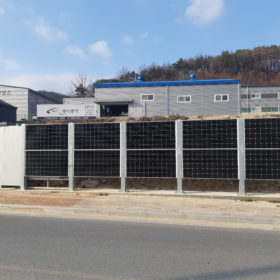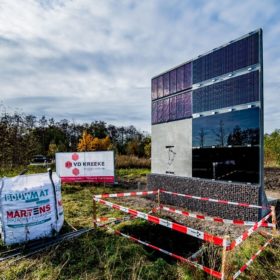Canadian consortium wants to deploy photovoltaic noise barriers across North America
A consortium led by building-integrated photovoltaics maker Mitrex wants to install highway noise barriers with integrated solar that have 1.2 MW of capacity per kilometer. The technology is currently in the pilot phase at government entity locations in North America.
Solar noise barrier along highway in Massachusetts
A massive solar noise barrier in the US state of Massachusetts is expected to generate 802,000kWh of electricity per year, or the equivalent of annually supplying 120 homes with power.
Photovoltaic-thermal noise barrier from South Korea
The Korea Institute of Energy Research has developed a 3kW solar noise barrier to produce electricity and heat. The thermal solar modules reduce the operating temperature of the photovoltaic panels by absorbing excess heat.
Testing field for PV noise barriers
Two testing facilities for photovoltaic noise barriers are being built by a Belgian consortium. Their creators want to assess different PV technologies, reduce costs and plan large scale projects in Belgium, where land and policy constraints make the construction of ground-mounted PV plants almost impossible.
Solar noise barriers require high self-consumption rates
Dutch contractor Heijmans has deployed a solar noise barrier to test three different PV module technologies, including cadmium telluride, CIGS, and crystalline products. Initial analysis has shown unexpectedly low returns, due to the rates at which the installation is selling power to the grid. But high levels of self-consumption could make such designs competitive with conventional noise barriers.





